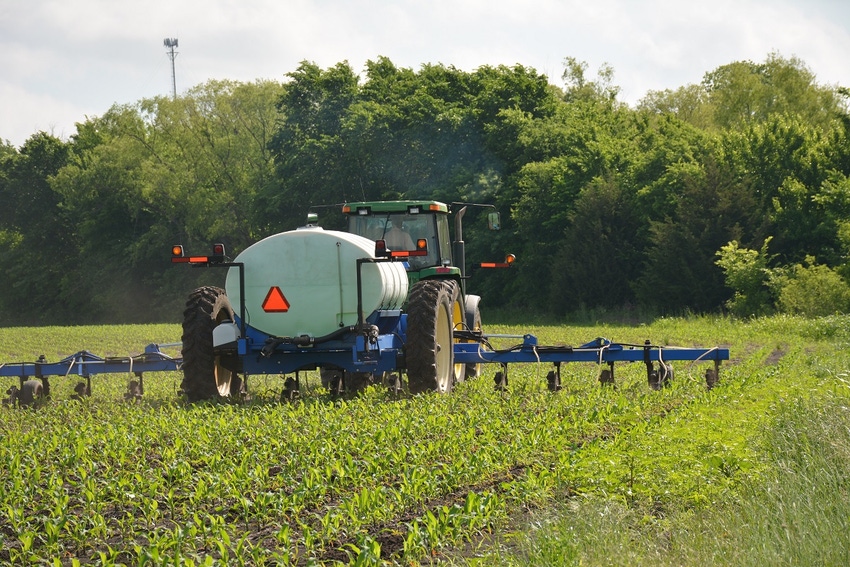
Land values across the nation have remained relatively flat over the past year, with many Corn Belt states showing a decline. But land in most of the Southwest region continues to increase in value.
Oklahoma cropland value increased by 8 percent; Texas is up 9.5 percent. Land values declined in Kansas (minus 2.1 percent) and New Mexico (minus 0.7 percent).
Pastureland values saw a 2.7 percent increase across the nation. In the Southwest, Kansas pastureland values moved up by 6.9 percent; Oklahoma increased 4.4 percent; and Texas inched up 1.3 percent. New Mexico pastureland value dropped 5.6 percent.
That’s according to the latest figures compiled from USDA NASS survey results by Oklahoma State University Agricultural Economist Damona Doye, Rainbolt Chair of Agricultural Finance, who says this year represents the first time in quite a while that a few areas have seen a decline in land value. The Corn Belt, for instance, shows a 0.5 percent decline.
For the latest on southwest agriculture, please check out Southwest Farm Press Daily and receive the latest news right to your inbox.
The Southern Plains, on the other hand, shows almost a 6 percent improvement in land values, as of last January. The Southeast is up about 1 percent, the Delta is up 5.5 percent, and the Pacific is 5.5 percent higher.
LOCATION IS A FACTOR
Doye, speaking at the annual Rural Economic Outlook Conference on the OSU campus at Stillwater, said smaller land parcel sizes in Oklahoma were selling for higher prices than larger units. Location plays a role. “The higher-value parcels typically are near urban areas and near roads.”
Cash rental rates have remained flat, but the gap between rents and land values has narrowed as land prices have increased over the past few years. Doye says Oklahoma cash rent for pastureland also remains flat, averaging about $12 per acre. “But we see a lot of variability across the state. Profits from the beef industry affect pastureland prices.” The demand for organic and grass fed beef also plays a role.
Cropland rental rates and values vary as well, depending to some degree on crop opportunity. In the Southern Plains where wheat is the dominant crop, value is not as high as for the Corn Belt where corn and soybeans, typically higher value crops, are more dominant.
Doye says anyone interested in investing in Oklahoma farm land should be of a patient disposition. “It’s not a get rich quick opportunity.” Figuring on 30-bushel per acre wheat yields and current farmland values, an investor would wait about eight years to pay for an acre of land, she says. “We also still have some over-valued land. It will come down, but when?”
MOST RENTED, LEASED
Most U.S. farmland purchasers buy acreage from a non-relative, through a broker or by direct sale, she says. That accounts for 49 percent of farmland sales. Inheritance or gifts account for 34 percent of the land that changes hands. Only 11 percent of purchased land is bought from a relative through direct sale or a broker. And 6 percent is purchased through auction.
Doye says 38.8 percent of U.S. farmland is rented or leased. Of the leased land, a non-operator landlord owns 11.6 million acres, a $29 billion value. Operator landlords account for 17 percent of leased acreage — 2.3 million acres, and $3.7 billion value. The remainder is controlled by non-operators, including individuals (33 percent), partnerships (13 percent), family corporations (10 percent), and trusts (27 percent).
Leased land use includes 48 percent rented out for pasture, 49 percent for cropland, and 3 percent for other uses, including forest. The biggest chunk of leased land, 60 percent, is managed by one tenant. Three or more tenants manage 23.2 percent of leased land and two tenants manage 16.8 percent.
Most acreage rented out consists of relatively large units, 200 acres to more than 1,000 acres. The 200-acre to 499-acre segment accounts for 34 percent of leased land. Parcels ranging from 500 acres to 999 acres account for 21 percent, and parcels above 1,000 acres represent 21.4 percent of leased acreage. Figures are from USDA-NASS surveys.
PLANS FOR FUTURE
A significant percentage of farmland owners expect to retain their land over the next five years, with 40 percent indicating they will put it in a trust, or keep it in a trust, and 36 percent indicate they will put it in a will, or keep it in a will. A smaller percentage will transition the land to other owners, with 11 percent to be disposed of as a gift or sold to a relative, and 13 percent to be sold to a non-relative.
In Oklahoma, 83 percent of landowners have no plan or do not know if they will transfer land to another owner within the next five years. Also, 7 percent plan to put land in a trust or keep it in one; 2 percent will sell to a non-relative; 2 percent will sell or gift land to a relative; and 6 percent will put the land in a will or keep it in one.
About the Author(s)
You May Also Like






